Cover
Modeling and Identification
of Linear Parameter-Varying
Systems
Lecture Notes
in Control and Information Sciences 403
ISBN 364213811X
Preface
Contents
Acronyms
List of Symbols
Chapter 1
Introduction
New Challenges for System Identification
The Birth of LPV Systems
The Present State of LPV Identification
The Identification Cycle
General Picture of LPV Identification
LPV-IO Representation Based Methods
LPV-SS Representation Based Methods
Similarity to Other System Classes
Challenges and Open Problems
Perspectives of Orthonormal Basis Function Models
The Gain-Scheduling Perspective
The Global Identification Perspective
Approximation via OBF Structures
The Goal of the Book
Overview of Contents
Chapter 2
LTI System Identification and the Role of OBFs
The Concept of Orthonormal Basis Functions
Signal Spaces and Inner Functions
General Class of Orthonormal Basis Functions
Takenaka-Malmquist Basis
Hambo Basis
Kautz Basis
Laguerre Basis
Pulse Basis
Orthonormal Basis Functions of MIMO Systems
Basis Functions in Continuous-Time
Modeling and Identification of LTI Systems
The Identification Setting
Model Structures
Properties
Linear Regression
Identification with OBFs
Pole Uncertainty of Model Estimates
Validation in the Prediction-Error Setting
The Kolmogorov n-Width Theory
Conclusions
Chapter 3
LPV Systems and Representations
General Class of LPV Systems
Parameter Varying Dynamical Systems
Representations of Continuous-Time LPV Systems
Representations of Discrete-Time LPV Systems
Equivalence Classes and Relations
Equivalent Kernel Representations
Equivalent IO Representations
Equivalent State-space Representations
Properties of LPV Systems and Representations
State-Observability and Reachability
Stability of LPV Systems
Gramians of LPV State-Space Representations
Conclusions
Chapter 4
LPV Equivalence Transformations
State-Space Canonical Forms
The Observability Canonical Form
Reachability Canonical Form
Companion Canonical Forms
Transpose of SS Representations
LTI vs. LPV State Transformation
From State-Space to the Input-Output Domain
From the Input-Output to the State-Space Domain
The Idea of Recursive State-Construction
Cut-and-Shift in Continuous-Time
Cut-and-Shift in Discrete-Time
State-Maps and Polynomial Modules
State-Maps Based on Kernel Representations
State-Maps Based on Image-Representations
State-Construction in the MIMO Case
Conclusions
Chapter 5
LPV Series-Expansion Representations
Relevance of Series-Expansion Representations
Impulse Response Representation of LPV Systems
Filter Form of LPV-IO Representations
Series Expansion in the Pulse Basis
The Impulse Response Representation
LPV Series Expansion by OBFs
The OBF Expansion Representation
Series Expansions and Gain-Scheduling
The Role of Gain-Scheduling
Optimality of the Basis in the Frozen Sense
Optimality of the Basis in the Global Sense
Conclusions
Chapter 6
Discretization of LPV Systems
The Importance of Discretization
Discretization of LPV System Representations
Discretization of State-Space Representations
Complete Method
Approximative State-Space Discretization Methods
Discretization Errors and Performance Criteria
Local Discretization Errors
Global Convergence and Preservation of Stability
Guaranteeing a Desired Level of Discretization Error
Switching Effects
Properties of the Discretization Approaches
Discretization and Dynamic Dependence
Numerical Example
Conclusions
Chapter 7
LPV Modeling of Physical Systems
Towards Model Structure Selection
General Questions of LPV Modeling
Modeling of Nonlinear Systems in the LPV Framework
First Principle Models
Linearization Based Approximation Methods
Multiple Model Design Procedures
Substitution Based Transformation Methods
Automated Model Transformation
Summary of Existing Techniques
Translation of First Principle Models to LPV Systems
Problem Statement
The Transformation Algorithm
Handling Non-Factorizable Terms
Properties of the Transformation Procedure
Conclusions
Chapter 8
Optimal Selection of OBFs
Perspectives of OBFs Selection
Kolmogorov n-Width Optimality in the Frozen Sense
The Fuzzy-Kolmogorov c-Max Clustering Approach
The Pole Clustering Algorithm
Properties of the FKcM
Simulation Example
Robust Extension of the FKcM Approach
Questions of Robustness
Basic Concepts of Hyperbolic Geometry
Pole Uncertainty Regions as Hyperbolic Objects
The Robust Pole Clustering Algorithm
Properties of the Robust FKcM
Simulation Example
Conclusions
Chapter 9
LPV Identification via OBFs
Aim and Motivation of an Alternative Approach
OBFs Based LPV Model Structures
The LPV Prediction-Error Framework
The Wiener and the Hammerstein OBF Models
Properties of Wiener and Hammerstein OBF Models
OBF Models vs. Other Model Structures
Identification of W-LPV and H-LPV OBF Models
Identification with Static Dependence
The Identification Setting
LPV Identification with Fixed OBFs
Local Approach
Global Approach
Properties
Examples
Approximation of Dynamic Dependence
Feedback-Based OBF Model Structures
Properties of Wiener and Hammerstein Feedback Models
Identification by Dynamic Dependence Approximation
Properties
Example
Extension towards MIMO Systems
Scalar Basis Functions
Multivariable Basis Functions
Multivariable Basis Functions in the Feedback Case
General Remarks on the MIMO Extension
Conclusions
Appendix A
Proofs
References
Index
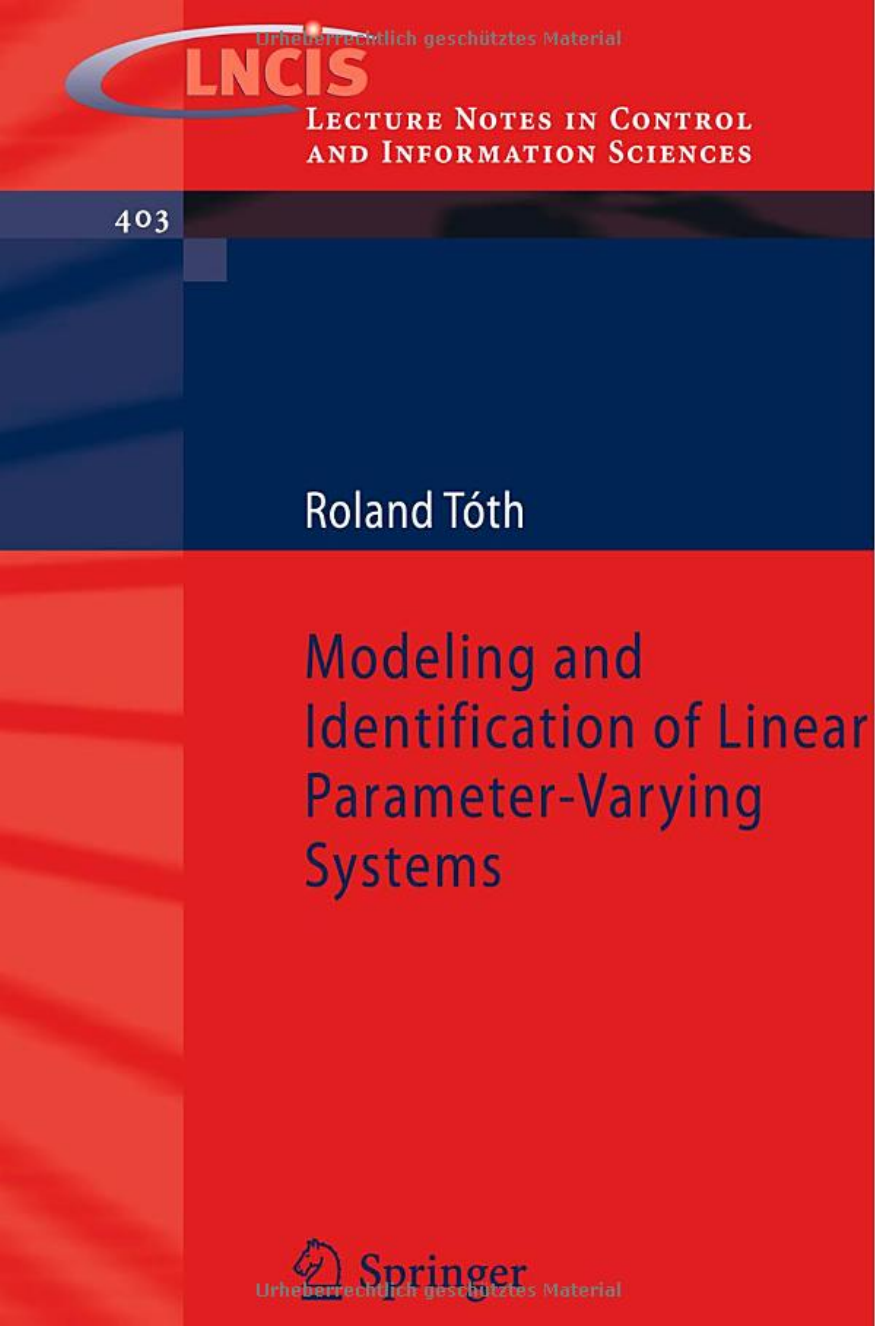
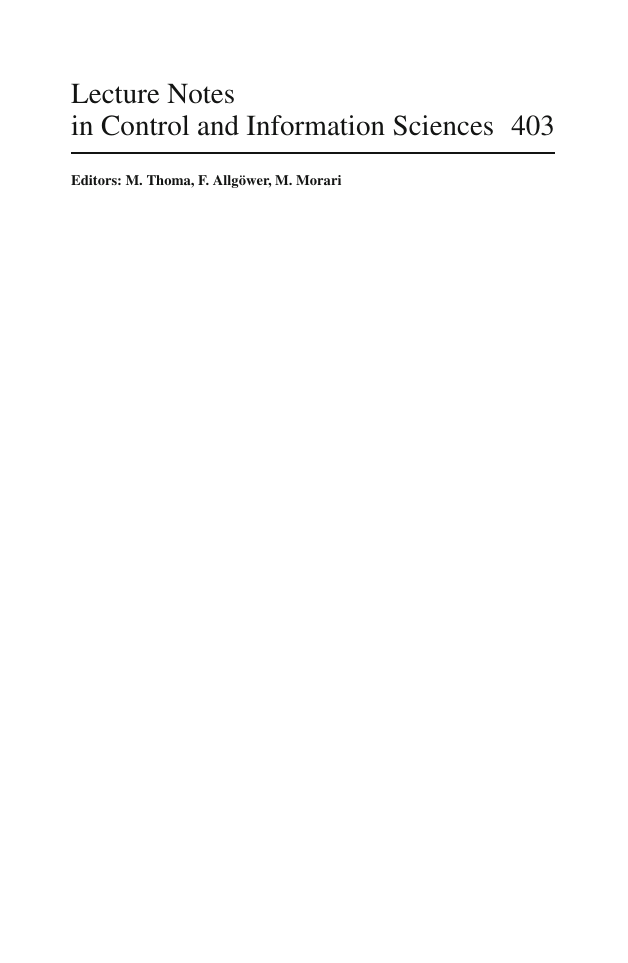
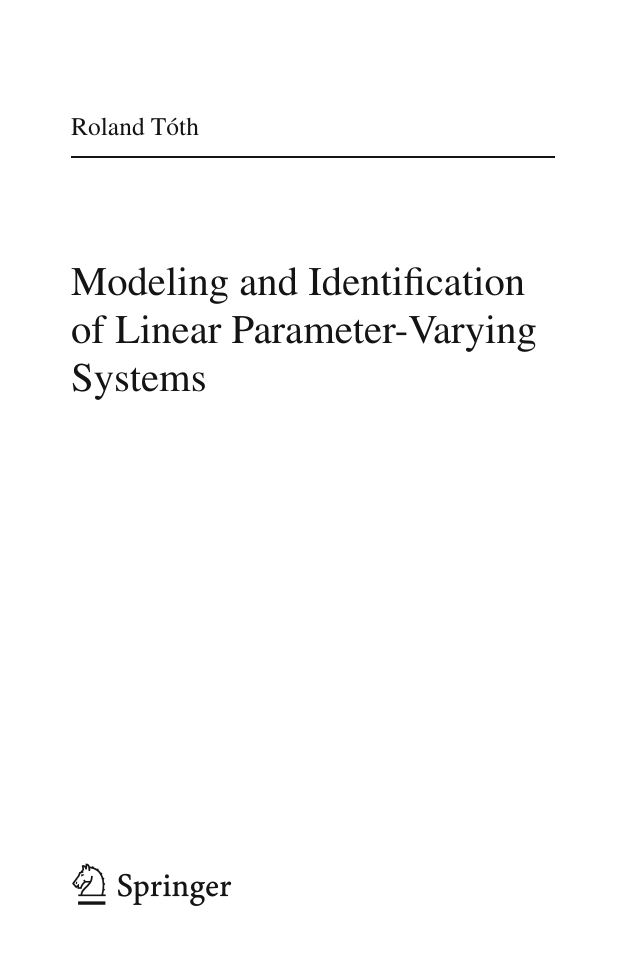


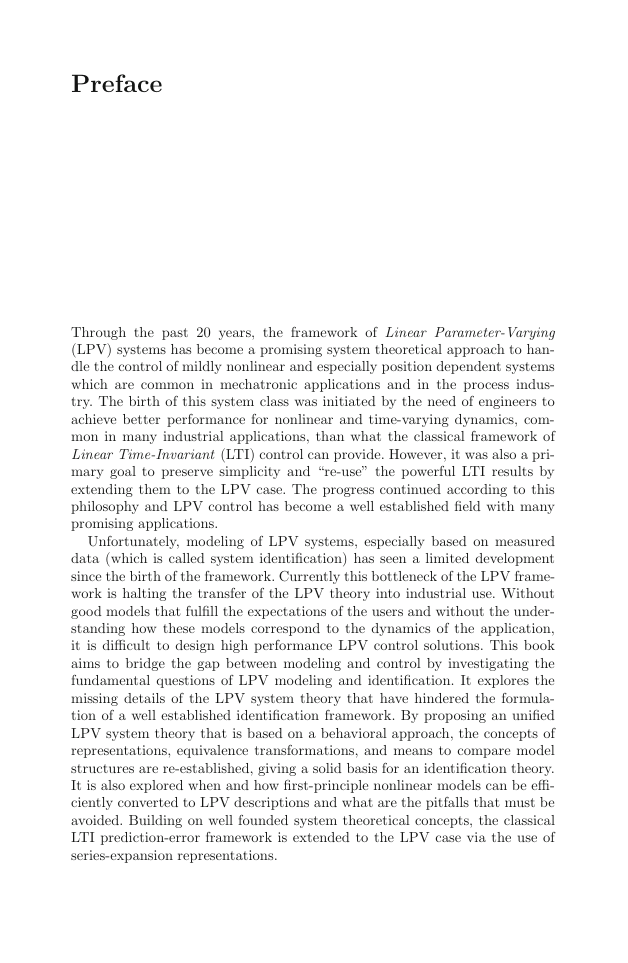
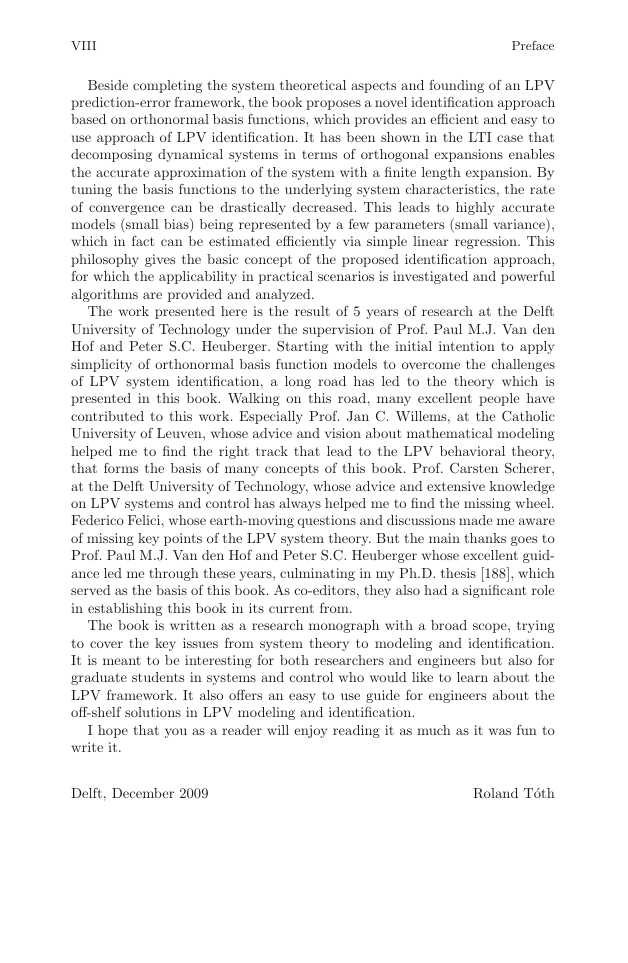
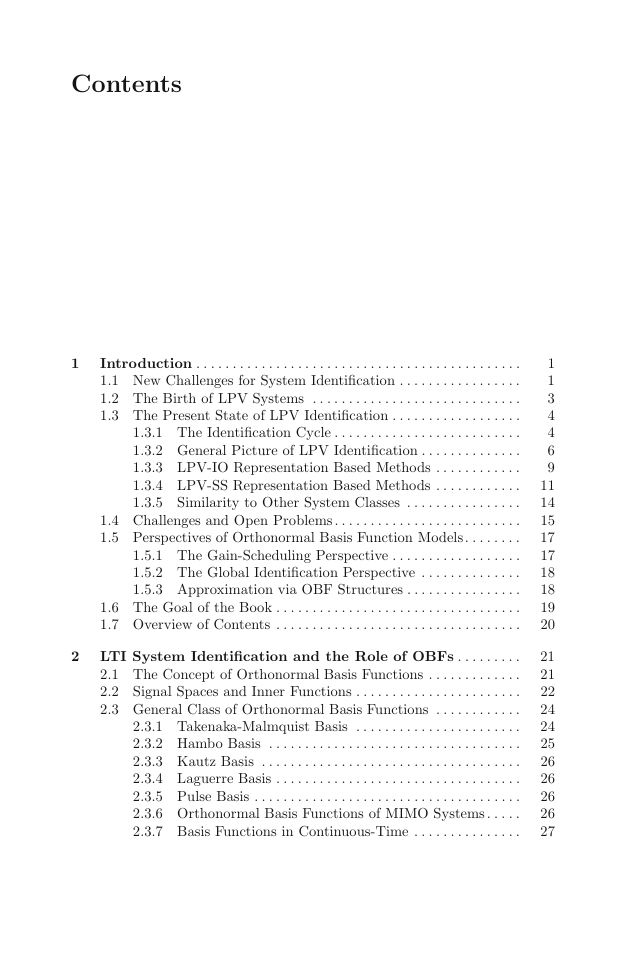








 2023年江西萍乡中考道德与法治真题及答案.doc
2023年江西萍乡中考道德与法治真题及答案.doc 2012年重庆南川中考生物真题及答案.doc
2012年重庆南川中考生物真题及答案.doc 2013年江西师范大学地理学综合及文艺理论基础考研真题.doc
2013年江西师范大学地理学综合及文艺理论基础考研真题.doc 2020年四川甘孜小升初语文真题及答案I卷.doc
2020年四川甘孜小升初语文真题及答案I卷.doc 2020年注册岩土工程师专业基础考试真题及答案.doc
2020年注册岩土工程师专业基础考试真题及答案.doc 2023-2024学年福建省厦门市九年级上学期数学月考试题及答案.doc
2023-2024学年福建省厦门市九年级上学期数学月考试题及答案.doc 2021-2022学年辽宁省沈阳市大东区九年级上学期语文期末试题及答案.doc
2021-2022学年辽宁省沈阳市大东区九年级上学期语文期末试题及答案.doc 2022-2023学年北京东城区初三第一学期物理期末试卷及答案.doc
2022-2023学年北京东城区初三第一学期物理期末试卷及答案.doc 2018上半年江西教师资格初中地理学科知识与教学能力真题及答案.doc
2018上半年江西教师资格初中地理学科知识与教学能力真题及答案.doc 2012年河北国家公务员申论考试真题及答案-省级.doc
2012年河北国家公务员申论考试真题及答案-省级.doc 2020-2021学年江苏省扬州市江都区邵樊片九年级上学期数学第一次质量检测试题及答案.doc
2020-2021学年江苏省扬州市江都区邵樊片九年级上学期数学第一次质量检测试题及答案.doc 2022下半年黑龙江教师资格证中学综合素质真题及答案.doc
2022下半年黑龙江教师资格证中学综合素质真题及答案.doc